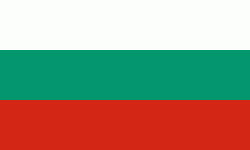Beloslav (Obshtina Beloslav)
Beloslav is an ancient settlement populated probably about 12,000 years ago. The first settlers inhabited the cave near today's town, where 12,000-year-old items were found. Around the 5th century BC the Thracians settled in the region. The town was also known as Krushevo, Gebedzhe (Gebece), Belovo, and Belevo. The Ottoman name is still used today in certain situations.
Beloslav is a transportation and industrial hub of national significance, part of the Varna-Devnya Industrial Complex. Transportation facilities include the railway and ro-ro ferry terminal with lines to Ukraine, Russia and Georgia served by the Sindel-razpredelitelna marshalling yard, the seaports of Varna Power Plant and LesPort of the Port of Varna complex, and a couple of railway stations. The largest (1320 MW capacity plus an 880 MW natural gas-fueled installation under development) thermal power plant in the nation, TEC Varna, part of the CEZ Group, and the Terem Flotski Arsenal shipbuilding/repair yard, comprising also an Oceanic-Creations facility, are located just east of town. TEC Varna materialized the largest cash privatization deal in the nation after 1989.
Beloslav is an old centre of artistic glassblowing and fireproof glassmaking and currently supplies glass vials to international pharmaceutical companies. In 2007, development of a new business and logistics centre started on the site of a former glass factory; it will also include two new manufacturing facilities and a port terminal for handling natural gas condensate, and will create a total of 2,000 jobs. The northeastern industrial park also contains several construction operations.
Beloslav is the seat of a municipality, which also includes the following villages:
* Ezerovo
* Razdelna
* Strashimirovo
Map - Beloslav (Obshtina Beloslav)
Map
Country - Bulgaria
 |
 |
| Flag of Bulgaria | |
One of the earliest societies in the lands of modern-day Bulgaria was the Neolithic Karanovo culture, which dates back to 6,500 BC. In the 6th to 3rd century BC the region was a battleground for ancient Thracians, Persians, Celts and Macedonians; stability came when the Roman Empire conquered the region in AD 45. After the Roman state splintered, tribal invasions in the region resumed. Around the 6th century, these territories were settled by the early Slavs. The Bulgars, led by Asparuh, attacked from the lands of Old Great Bulgaria and permanently invaded the Balkans in the late 7th century. They established the First Bulgarian Empire, victoriously recognised by treaty in 681 AD by the Eastern Roman Empire. It dominated most of the Balkans and significantly influenced Slavic cultures by developing the Cyrillic script. The First Bulgarian Empire lasted until the early 11th century, when Byzantine emperor Basil II conquered and dismantled it. A successful Bulgarian revolt in 1185 established a Second Bulgarian Empire, which reached its apex under Ivan Asen II (1218–1241). After numerous exhausting wars and feudal strife, the empire disintegrated and in 1396 fell under Ottoman rule for nearly five centuries.
Currency / Language
| ISO | Currency | Symbol | Significant figures |
|---|---|---|---|
| BGN | Bulgarian lev | лв | 2 |
| ISO | Language |
|---|---|
| BG | Bulgarian language |
| TR | Turkish language |















